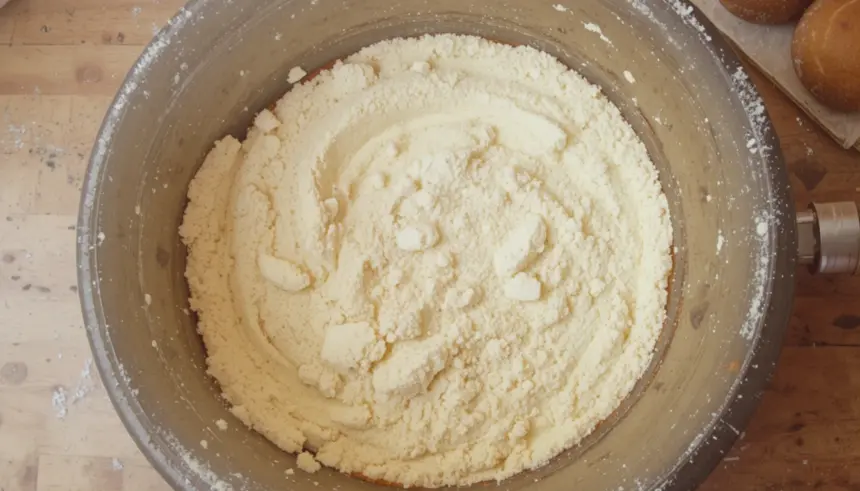You Won’t Believe How Easy This Pound Cake Is (And How Delicious!)
So, you’re craving something ridiculously tasty but, let’s be honest, the idea of a super-fussy baking project makes you want to take a nap? Yeah, me too. But what if I told you we could achieve pure, unadulterated pound cake bliss with minimal fuss and maximum yum? Get ready to meet your new best friend in the baking world.
Why This Recipe is Awesome (Seriously)
Okay, let’s get real. Some pound cake recipes are like a complicated relationship – too much drama, too many steps, and you end up wondering if it’s even worth it. This one? This one is the chill, low-maintenance friend who always shows up with the goods. We’re talking a tender, moist crumb that’s melt-in-your-mouth amazing, all thanks to the magic of cake flour. Plus, it’s so straightforward, I’m pretty sure even my cat could follow along (if she had opposable thumbs, that is). No fancy tricks, no weird ingredients you can’t pronounce. Just pure, buttery goodness.
Ingredients You’ll Need
- 1 cup (2 sticks) unsalted butter, softened (like, really soft, not just “meh, it’s a bit squishy”)
- 3 cups cake flour (this is the secret weapon, don’t skip it!)
- 1 ½ cups granulated sugar (your classic sweet friend)
- 6 large eggs, at room temperature (cold eggs are moody eggs, FYI)
- 1 teaspoon vanilla extract (the soul of the cake)
- ½ teaspoon salt (to balance all that sweetness)
- ¼ teaspoon baking powder (just a little lift, nothing too wild)
- ½ cup milk (whole milk is preferred for maximum richness, but hey, whatever you have!)
Step-by-Step Instructions
- Preheat your oven to 325°F (160°C). Grease and flour a 9×5 inch loaf pan. Seriously, do this well – nobody likes a cake that’s glued to the pan.
- In a large bowl, cream together the softened butter and granulated sugar until it’s light and fluffy. Think fluffy clouds, but tastier. This is where your mixer earns its keep.
- Beat in the eggs, one at a time, making sure each one is fully incorporated before adding the next. Scrape down the sides of the bowl as needed. Patience, grasshopper!
- In a separate bowl, whisk together the cake flour, salt, and baking powder. This is like a little pre-party for your dry ingredients.
- Now, alternate adding the dry ingredients and the milk to the butter mixture. Start and end with the dry ingredients, mixing until just combined after each addition. Don’t overmix, or your cake might get tough. We want tender, not tenacious!
- Stir in the vanilla extract. Give it a final gentle mix to make sure everything is happily married.
- Pour the batter into your prepared loaf pan and smooth the top.
- Bake for 60-75 minutes, or until a wooden skewer inserted into the center comes out clean. If the top starts to brown too quickly, you can loosely tent it with foil. Ovens can be so dramatic!
- Let the cake cool in the pan for about 10-15 minutes before inverting it onto a wire rack to cool completely. Admire your handiwork!
Common Mistakes to Avoid
- Using all-purpose flour: Unless you’re going for a denser, bread-like texture, stick with cake flour. It’s lighter and makes all the difference.
- Not softening your butter enough: Cold butter is not your friend here. It won’t cream properly, and your cake might end up uneven.
- Overmixing the batter: Once you add the flour, treat it gently. Overworking it develops gluten, which leads to a tough cake. We want fluffy, not chewy!
- Opening the oven door too early: Resist the urge to peek! Every time you open the door, you lose heat, which can cause your cake to sink. Be strong!
Alternatives & Substitutions
Can you use a different flour? Well, technically, yes, but **cake flour is really the star of this show** for that signature tender crumb. If you absolutely *must* use all-purpose, you can try substituting it, but be aware the texture will be different (denser, more bread-like). For the milk, if you don’t have whole milk, 2% or even skim will work in a pinch. Even buttermilk or a dairy-free alternative like almond milk could work, though it might slightly alter the flavor and texture.
FAQ (Frequently Asked Questions)
- Can I make this in a Bundt pan? Absolutely! Just adjust the baking time. It might take a little longer, so keep an eye on it and check with that trusty skewer.
- Why is my cake sinking in the middle? Usually, this is a sign of either overmixing, underbaking, or opening the oven door too early. Don’t fret, it probably still tastes good!
- Can I add anything to the batter? Go for it! A handful of berries, some chocolate chips, or a swirl of jam are all excellent additions. Just don’t go overboard and change the batter consistency too much.
- How long does this cake last? Stored in an airtight container at room temperature, it should be good for about 3-4 days. Though, let’s be honest, it rarely lasts that long.
- Can I freeze it? Yep! Once completely cooled, wrap it tightly in plastic wrap and then foil. It should keep in the freezer for up to 3 months. Thaw at room temperature.
- My butter isn’t quite soft enough, can I microwave it? Please, for the love of all things delicious, don’t melt your butter! Softened butter is key. Let it sit on the counter for a bit longer, or if you’re in a real pinch, you can *very carefully* microwave it in 5-second bursts, stirring in between.
Final Thoughts
And there you have it! A ridiculously easy and delightfully delicious pound cake that will make you look like a baking wizard. Serve it plain, dust it with powdered sugar, or go all out with some fresh berries and whipped cream. Whatever you do, enjoy every single bite. Now go impress someone—or yourself—with your new culinary skills. You’ve earned it!



